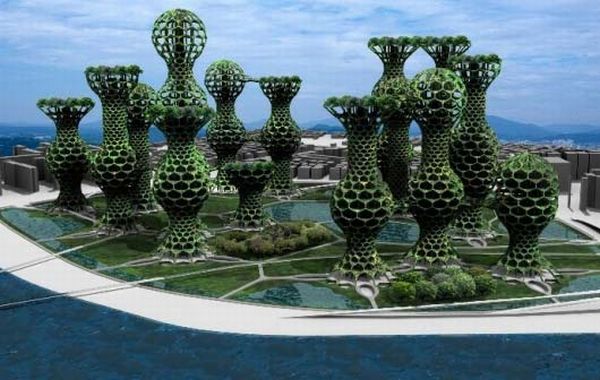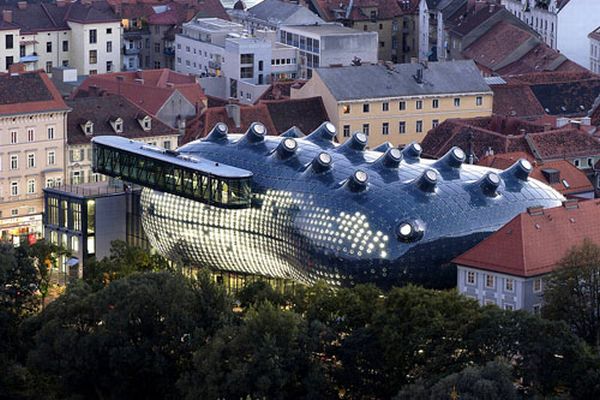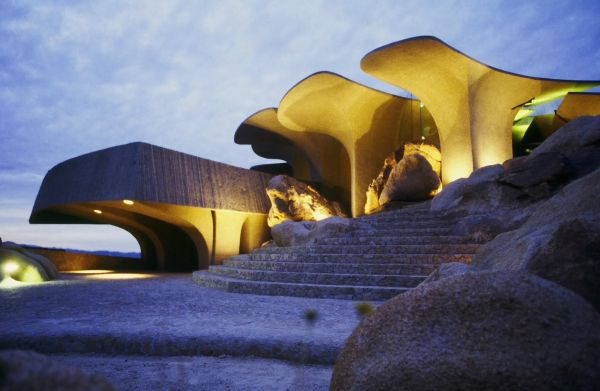
What is happening right now?
With the confluence of advanced bio-genetics and high level ciphering in the late 20th century, and the subsequent completion of the Human Genome Project, we in the present day are surely witnessing the evolution of an unprecedentedly progressive era. The advent of this radical epoch is bound to transform the way we think and interact with our environment and the world at large.
One such field of futuristic interaction would be Genetic Architecture – based upon the very fundamental philosophical notion of Genesis. The related design concepts speculates and even appraises – the generation of skin systems from existing technological researches, for cladding material of buildings!
Trends :
Dragon Fly:

In context of the growing inclination toward the “green is back” tendency especially in urban areas, the Dragon Fly Project conceived by Vincent Callebaut conceptualizes of building a prototype of an urban farm that will have mixed space usage of housing, offices and laboratories in ecological engineering. The farming spaces would be vertically laid out in different floors and will be partly cultivated by its own inhabitants. The whole system will be sustainable in conjunction with the organic agriculture varying according to seasons.
Kunsthaus Graz:

This bizarre looking art gallery, also known as “friendly alien,” was designed by architects Peter Cook and Colin Fournier of London. The bulging asymmetrical shape of this ultra-organic building looks like a shimmering metallic water bubble that is basically allowed to flow around the existing historical structures! Tapering glass portholes are provided at the rooftop for further allowance of daylight. As Colin Fournier has put it:
While the building’s interior is meant to inspire its curators as a black box of hidden tricks, its outer skin is a media façade which can be changed electronically.
High Desert House Designed by Kendrick Bangs Kellogg, California:

In the rock outcrop of the California desert, the architect has designed a house with 26 exquisitely grand wings of gently bulged concrete forms. They all rest on cantilevered, shaped, concrete platforms, spanning up to 50 feet and 10 feet across. The home uses attributes from direct heat gain utilizing its thermal mass. Furthermore, the wings are separated by glass to allow for natural light and the various frequencies caused by California earthquakes, and is also designed 30% above the highest earthquake standards.
Living City – Employing Intelligent Building Facades:

Conceptualized and designed by architects David Benjamin and Soo-in Yang, in Living City the building facades are made to be active and even interactive. The team designed a system of sensors that can be easily mounted and fixed on a building exterior, to gather information about carbon monoxide and nitrogen content in the air. Additionally in the next phase, the team designed a prototype of façade louvers that can open or close depending on the air quality readings, and as a result allowing a building to breathe in reaction to external environmental conditions.
The Concept:
Karl Chu, the founder of innovative architectural firm Metaxy, foresees the genetic architects creating buildings that would have some degree of sentience imbibed in them. The buildings could even build themselves, powered by their self awareness. We can see his ideas are directly influenced by Utopian ideals of eminent architects such as Frank Lloyd Wright and right up to to the ’60s.
The Advantages:
The level of intelligence manifested by the future genetic buildings would really be unparalleled and even extraordinary, when compared to present structures. As George Dvorsky writes at the Institute for Ethics and Emerging Technologies:
Future “genetic buildings” could, for example, be self-assessing, self-healing and self-modifying, thus minimizing their need to be repaired or maintained by external sources. These buildings could even meet the needs of its inhabitants by sensing the moods or health of its occupants and act accordingly. Needless to say, the potential for sustainability is substantial.
The Impact:
Since ancient times like the Classical Greek period, architecture has always endeavored to coalesce with nature on a human scale. But in the present situation of overcrowding and pollution, genetic architecture proposes the ambitious yet righteous alternative – the large scale creation of intelligent buildings and spaces in conjunction with their geo-engineered environments.




